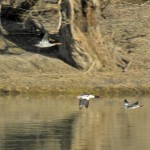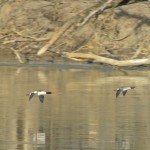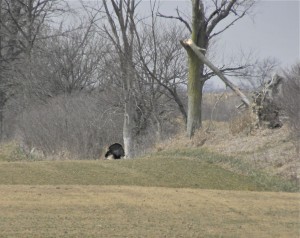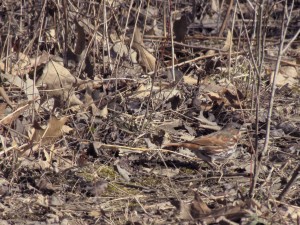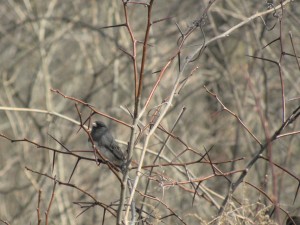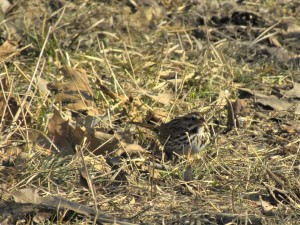April 12 2013, LaSalle Marina, Burlington ON. We’ve just been swept by a very late winter storm. It came at us slowly from the west, we had plenty of warning: expect freezing rain, or ice pellets, or snow; expect chaos on the highways and expect flooding. And just as predicted it swept over us taking a day and a half to do all of those things, if you stayed indoors and maybe read a book or had a nap, it was all right. Some people went birding I expect, but not me.
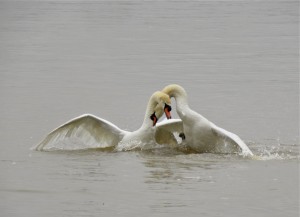
This afternoon, in the calm after the storm, I went to see what birds were around, to see if any oddities had blown in, or maybe friends blown away. At a nearby marina a small group of very cold men were trying to recapture and reconnect a bunch of floating docks that had broken loose and washed up on a distant shore. For a while it was all rather discouraging, even the birding was hardly noteworthy. I was mildly interested in six pairs of Gadwall, maybe they’ll nest around here I thought. A couple of male Mute Swans were pummeling each other in an effort to impress a female who seemed to be paying them little attention. Several pairs of Red-breasted Mergansers were prowling along the shore and sort of grunted at me as they swam off. There seemed to be American Coots everywhere and for a while I rolled the alliterative pairing ‘Coot Country’ around my brain, but eventually that too faded.
Trudging back to the car I spotted a Caspian Tern just a few yards away, low and flying parallel to the shore. My first of the year; and it made me think wow! and thereby qualified as Bird of the Day. Invigorated, I pulled out my notebook and started to jot down my sightings, I remembered that I’d heard a Carolina Wren and a Northern Flicker; I’d seen a Pied Billed Grebe, a Brown Creeper and three or four Golden-crowned Kinglets up close.
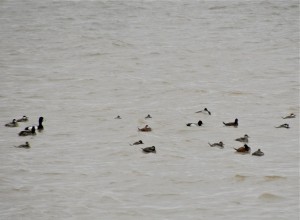
A little later I stopped to check a raft of ducks I’d spotted just offshore and found that they were mostly Ruddy Ducks with a handful of scaup (not sure which kind) mixed in. A couple of Turkey Vultures sailed low overhead and a Common Grackle was squeaking and creaking for his mate’s benefit. This winter storm will be forgotten in no time, and then we can get on with spring.
